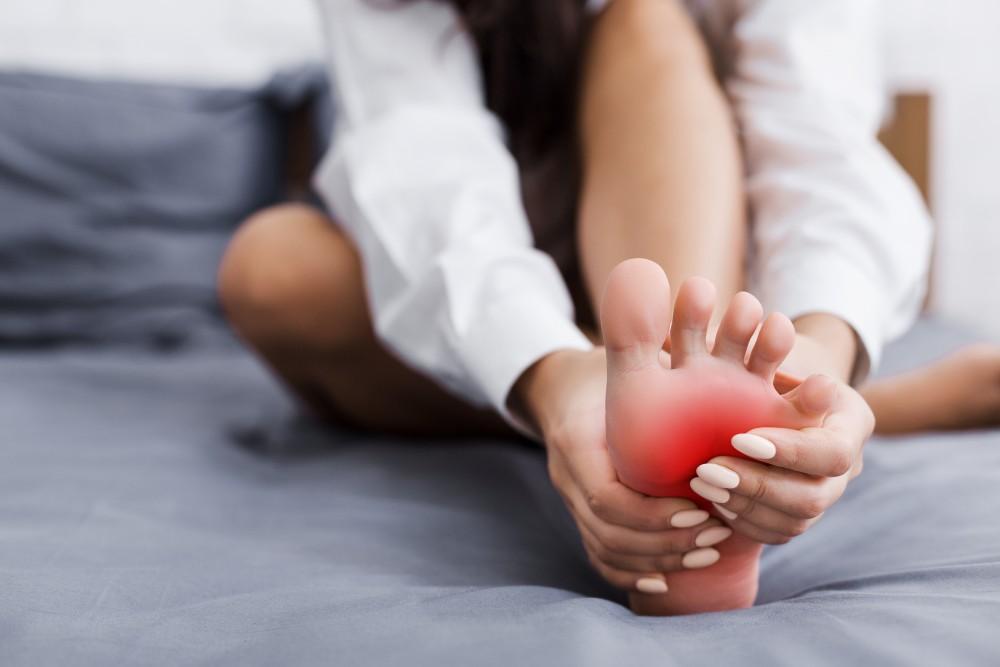
Do Bunions Require Surgery?

Bunions can cause much pain and limit your mobility. Furthermore, they are a progressive issue that can cause more complications to occur if left untreated. Most people who suffer from this condition find relief with conservative treatment options.
Wearing wider shoes or using special insoles can help alleviate pain. If your symptoms continue or worsen, bunion surgery might be the best option. If your bunion is interfering with the quality of your life, our podiatry experts at Premier Foot & Ankle can provide effective treatment options. With convenient locations in Dallas, Plano, McKinney, Frisco, Allen, Mesquite, and Celina, Texas, accessing proper care is easier than ever.
What is a bunion?
A bunion (hallux valgus) is a progressive abnormality that develops in the joint at the base of your toe. It can also affect your smallest toe and place extra pressure on the rest of your toes. As the tissue around your joint stiffens, developing inflammation, this triggers painful symptoms. The pain that affects your joints eventually makes it difficult to walk as it begins to grow sideways, become deformed, or enlarged.
The cause of bunions is often genetic because we inherit the shape and structure of our feet. Ill-fitting shoes can also place pressure on joints, forcing your toes into an uncomfortable position. Women are more likely than men to develop bunions because they often wear shoes that are confining or have pointy tips. Foot injuries, osteoarthritis, and congenital foot problems often predispose people to this condition.
What are some treatment options?
Unfortunately, bunions don't go away on their own. The goal of treating your condition is to relieve pressure and prevent further injury that may result from joint damage.
Some treatment options for bunions may include:
- Steroid/ cortisone injections
- Medication like anti-inflammatories
- Custom orthotics, mole-skin or gel-pads
- Physical therapy
- Using a splint
- Wearing shoes with soft materials
If you're in severe pain that fails to improve, bunion surgery might be the right option.
What is bunion surgery?
When regular rest and medicine don't relieve inflammation and swelling, you may require bunion surgery. The type of surgery that you'll require depends on your age, level of activity, the condition of your joints, and the severity of your bunion. The result of surgery should relieve pain and correct the deformity. Here are some of the procedures that one of our specialists may use.
- Mild bunion: One of our specialists realigns the muscles, tendons, ligaments, and removes the joint enlargement.
- Moderate bunion: Treating a moderate bunion involves cutting the bone and shifting its place. The doctor puts the surrounding ligaments and tendons into the proper position.
- Severe bunion: Realigning the joint, shifting the position of affected tendon and ligaments, and removing the deformity can correct a severe bunion.
The doctor determines what operation is best for your case based on your lifestyle and the severity of your bunion.
What happens during bunion surgery?
The doctor begins by asking you to remove your clothing and provides you with a gown. They place an IV in your arm or hand clean the skin with an antiseptic solution and apply a local anesthetic to the area. Doing this helps avoid the possibility of pain or infection. Your specialist cuts, realign, or remove portions of your bone.
Removing and repositioning affected ligaments and tendons can lessen the severity of your bunion. The doctor monitors your blood circulation and sensation in your feet after surgery. Once your blood pressure and breathing are stable, you can return home wearing a special surgical cast that protects your foot. Once you're home, one of our health care providers gives you instructions about caring for your foot.
You need to elevate your foot on a pillow to reduce swelling and pain. Applying ice to the are, and limiting walking help your foot heal. Wearing shoes that don't fit properly can cause your bunion to return. In 15% of cases, the bunions grow back.
What are the risks of bunion surgery?
Some complications may be possible with this procedure, including:
- Numbness
- Swelling
- Infection
- Stiffness
These complications may cause the bunion to recur or nerve damage and pain to appear.
If your condition continues to worsen despite conservative treatment options, call our office, or book an appointment to discuss surgery options.
You Might Also Enjoy...


Lapiplasty: How 3D Bunion Correction Works

How to Get to the Root of Your Chronic Heel Pain

5 Ways to Care for Your Athletic Feet This Year

How to Keep Toenail Fungus From Spreading


